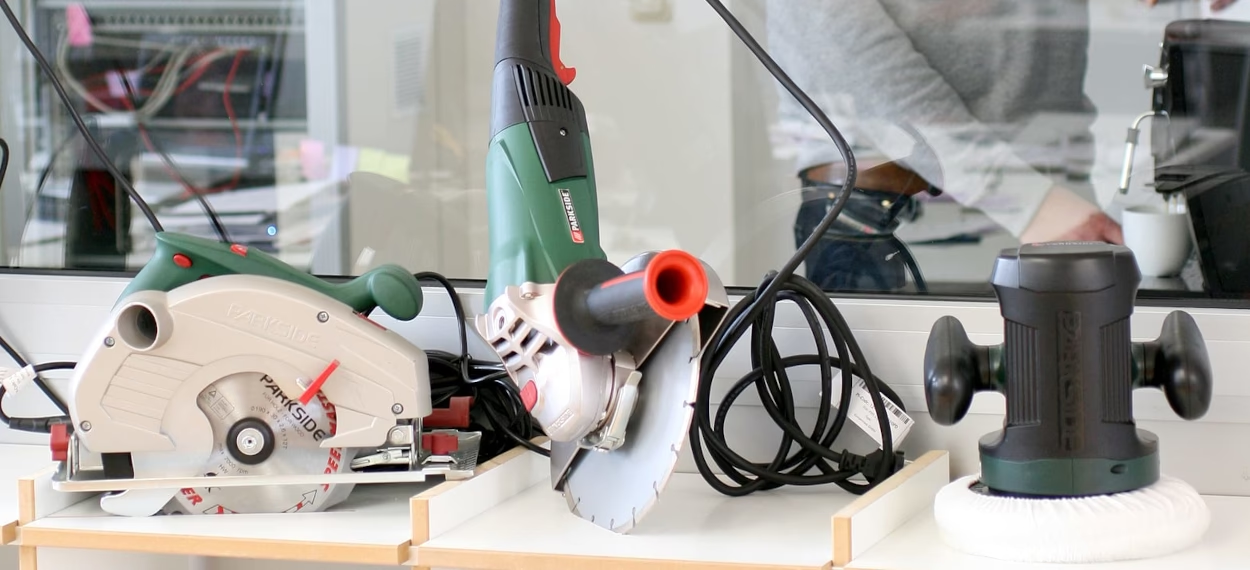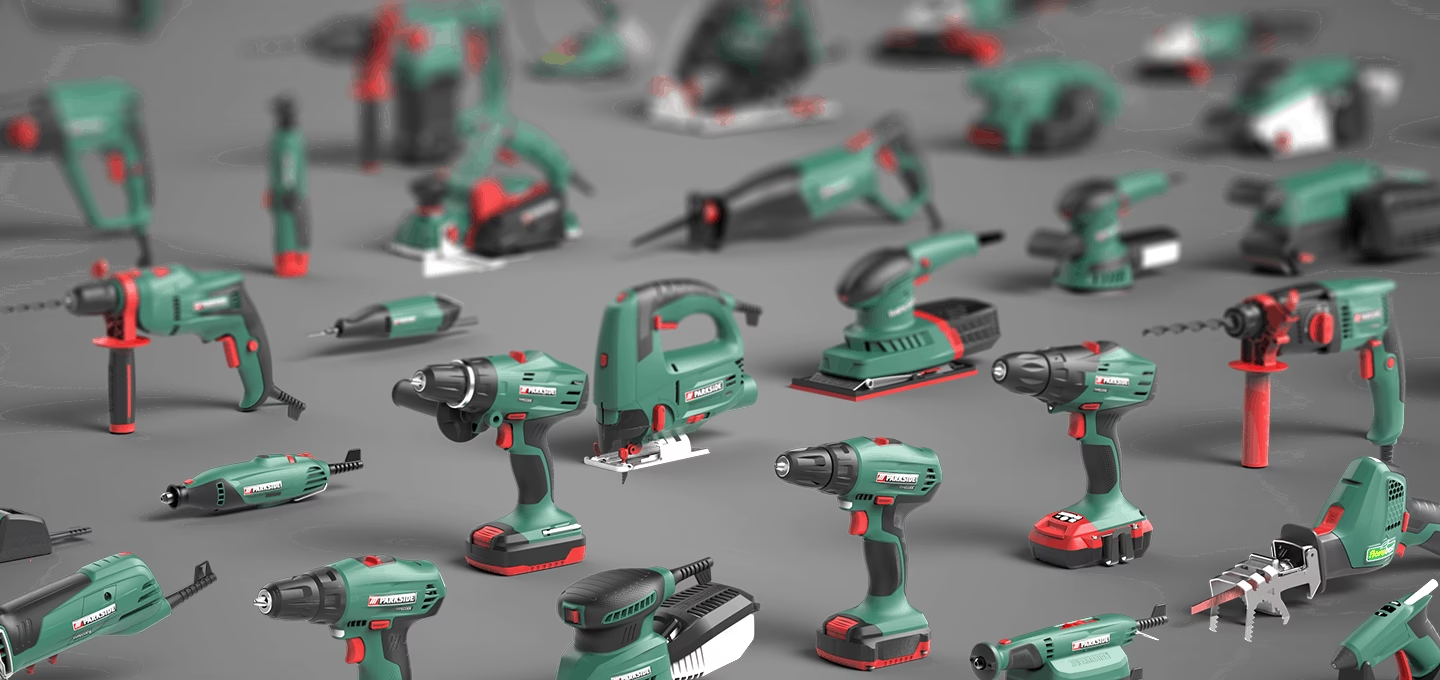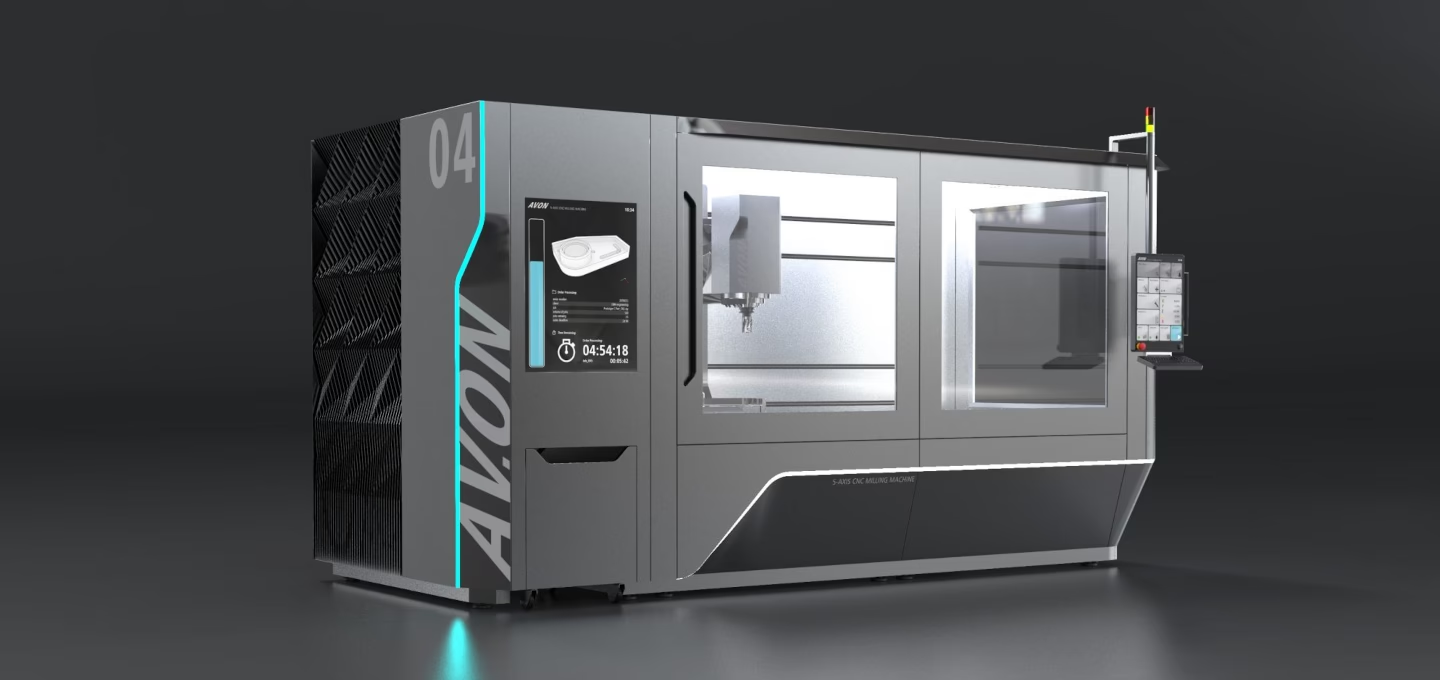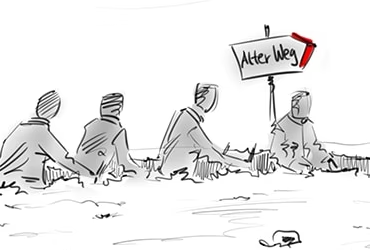Success Factors for Power Tools: From Ergonomics to Production Readiness
As a tool manufacturer, you face critical questions:
- How can we improve the handling of our power tools?
- How do we bring performance "to the street" or into the workpiece?
- What design best appeals to our target audience?
Over the past 15 years, we have addressed countless such questions. During this period, we have developed, improved, and brought to market over 500 power tools with our clients. Numerous others are currently in development.
What have we learned from our work in power tool design? What pitfalls need to be overcome? Here's what you need to know.
What Distinguishes Professional Power Tool Design
The central question we ask ourselves when developing any power tool is: What makes it a good product?
Fulfilling the task naturally takes top priority. A budget device from a discount store has just as much justification as a high-end professional tool.
From DIY Tools to Professional Power Tools
The occasional DIY enthusiast who merely wants to mount a shelf or hang a few pictures typically doesn't push a simple budget drill to its performance limit. The vast majority of these devices lead an underutilized existence in closets or basements. The decisive purchasing criterion here is price-performance ratio.
In professional use, however, effectiveness and speed are paramount. A breakdown means immediate loss of productivity that must be prevented. In this case, performance and robustness take precedence. Professional power tool design must understand and implement these different requirements.
The 5 Success Factors in Power Tool Design
When developing our power tools, the same evaluation criteria repeatedly emerge – weighted differently according to the respective target group, of course. The requirements in power tool design can be divided into the following areas:
1. Safe Function and Workplace Safety in Power Tool Design
We are frequently confronted by clients with product weaknesses that need analysis: damaged switches, gear blocks broken out of the housing, overheated devices.
Intelligent Component Placement Increases Longevity
Often, it's not just engineers ensuring stronger materials or better construction. In many cases, we can protect sensitive components from damage through smarter placement of controls or vulnerable parts.
For example, using shock-absorbing TPE (thermoplastic elastomer) at critical points can prevent the housing of a cordless screwdriver falling from a ladder from breaking.
Particularly for extended use of grinders, a good cooling concept is enormously important. Intelligent power tool design ensures long durability and a high degree of safety.
Thermal Management in Power Tools
How can excess heat be efficiently dissipated? With well-designed ventilation openings planned from the beginning in power tool design, as well as through highly heat-conductive metal parts, we can avoid overheating without impairing the user during operation.
Workplace Safety Through Thoughtful Design
This brings us to the second sub-aspect of safe function: workplace safety. For every device, we analyze the respective hazard areas for the user.
These can be minimized with various protective covers or safety devices, such as multi-way switches that cannot be triggered unintentionally.
Through alternative arrangement of technical functional and operating elements, we can often increase the distance between the hazard area and user interface, thus enhancing safety. Many such workplace safety requirements are specified in standards and are accordingly considered in power tool design.

2. Ergonomics and Intuitive Operation in Power Tool Design
Safety is also achieved through good ergonomics. Only when a tool sits securely in the hand can I work safely. Only when I reach the controls where I intuitively expect them can I work in a controlled and consequently efficient manner. Only when I know the activation state of my tool can I pick it up safely.
Ergonomic Models for Optimal Handling
To optimize handling, we create ergonomic models either manually, by 3D printer, or CNC milling machine. Of course, we have gained much experience, but nothing beats trying it out.
Every new power tool design must be tested – and preferably by many different people. We continuously verify the ergonomic requirements specified by the target group or the intended use:
- Who operates the machine?
- In what body position is the activity performed?
- Is work done with gloves?
- What stresses arise for the user during work?
Scientifically Based Grip Design
Incorporating scientifically-statistically determined body measurements, we establish grip lengths and thicknesses as well as positions of operating elements to ensure work that is as stress-free as possible.
User Feedback and Product Communication
Ergonomics in power tool design also includes the entire area of operator feedback. The device must give me as much information as possible about operating options and its current state.
This is best accomplished through language-neutral understandable product graphics, clearly identifiable switch positions, tactile pressure points, as well as easily visible scales, pointers, LED displays, or screens.
3. Economical Manufacturing of Power Tools
Particularly for products from the do-it-yourself sector (DIY), economical production is crucial. Power tools in hardware stores or at discount retailers are each sold by the hundreds of thousands.
Material Optimization for Large Series
Material-quantity-optimized power tool design plays an important role here. Sometimes a single gram of material savings can determine a product's marketability in competition.
But we also plan injection molding cycle times and the simplest possible assembly from the beginning of development. Often the time window for production is very limited due to the planned market launch date.
Production-Appropriate Construction from the Start
The technical production capabilities of respective manufacturers or suppliers must be precisely determined from the beginning and considered in power tool design. Particularly for manufacturing in Asia, one cannot always assume the most modern state of technology.
Even with the first concept sketches, we consider, for example, the demolding directions of later manufacturing tools. This way we avoid unnecessary correction loops and changes in development and minimize time-to-market.
4. Sustainable Development in Power Tool Design
Ecological considerations also support keeping material use as economical as possible. Especially with high volumes, every gram of saved material or the avoidance of potentially harmful substances in the interest of the environment and health is an important goal and is now very consistently pursued by all our clients.
Quality Management for Longevity
Sustainability in development also means bringing the respective product to market only when it is mature. Quality management plays a special role here.
During development, we repeatedly verify whether planned measures and design details fulfill their respective purpose and lead to product improvement. Prototypes and pre-series samples serve as controls.
Only this way can the finished power tool exist in the market for as long as possible and not need to be replaced prematurely by an improved successor.
Product Families and Series Design for Power Tools
Power tools are typically part of an entire product family or series. When developing a new design, we therefore recommend building the power tool design directly as a series with several representative family members.
Design DNA for the Entire Product Family
Only this way can design elements be developed that are applicable to the most diverse device topologies. There are static as well as dynamic machines, hand-held or stationary, large or small, elongated or compact constructions. For all cases with their different characteristics, the power tool design should be applicable and, above all, recognizable.
For each individual product, family affiliation should be clearly visible to increase brand identity. Beginning and continuing design development with only a single product requires very high adaptation effort afterward to achieve a uniform appearance for a product family.
We therefore recommend: Do the right thing from the beginning!

5. Target-Group-Appropriate Power Tool Design
We industrial designers don't design for ourselves or our portfolio. We also don't design for our client and their preferences. If we truly want to develop a successful product, we must serve the target group you – our client – are targeting with our design decisions.
From DIY to Professional: Understanding Different Requirements
Usually these are the later end users or technically knowledgeable purchasers. The expectations of this target group for the device should ideally already be visibly fulfilled through its external appearance.
Professional functions, durability, robustness, lightness, good cleaning capability, intuitive operation, but possibly also certain fashion trends are characteristics that can be visualized through targeted product design so that everyone intuitively understands them.
Specific Target Groups in Power Tool Design
Craft businesses, high-tech companies, occasional DIY enthusiasts, ambitious DIYers, women (smaller grips, lighter devices...), or even children (visual references to themes from playful environments) all have their own requirements for a tool.
For example, the purchaser of a high-tech bone saw in a hospital will typically prefer a clean power tool design with extremely intuitive user guidance. This conveys to the medical professional the impression of good cleaning and disinfection suitability and safety against incorrect operation.
A craftsman may want to quickly find his cordless screwdriver on a cluttered construction site or prevent it from sliding off a sloped roof. He will more likely prefer a signal-colored device with shock-absorbing rubber bumpers.
Strategic Decisions for Maximum Benefit
You as the client must also make the right strategic decisions to derive the greatest possible benefit for your company from design development.
The Future: Intelligent Power Tools and Connected Devices
Machines will become increasingly intelligent in the future. The integration of IT into the power tools sector has long since begun. Combinations with measurement technology, smartphones with app control, and radio technology already enable fine-tuning, statistical evaluations, increased safety, and theft protection on construction sites today.
IoT and Connected Tools
The power tool design of the future integrates digital interfaces, sensors, and connectivity. This development will continue and presents new design requirements: displays must be readable, operating elements must remain intuitive despite additional functions, and robustness must not suffer from the integration of electronics.
Conclusion: Successful Power Tools Through Holistic Power Tool Design
In designing approximately 500 power tools, we have gained extensive experience. Only critical review of the technical package and development of intuitive ergonomics later enable safe and efficient work and a successful product.
Professional power tool design combines:
- Safe function and workplace safety through intelligent component placement and protective mechanisms
- Ergonomics and intuitive operation based on scientific findings and extensive testing
- Economical manufacturing through material-optimized design and production-appropriate construction
- Sustainable development with focus on longevity and resource conservation
- Series design for recognizable product families with strong brand identity
- Target-group-appropriate design from DIY to professional tools
Your Power Tool Development Starts Here
For 15 years, we have successfully developed power tools for leading manufacturers worldwide. We have accompanied over 500 power tools from initial concept to production readiness – from cordless screwdrivers to grinders to highly specialized professional tools.
If you want to develop a power tool design that convinces your target audience, meets safety standards, and is economically successful, we are the right partner.
Let us provide you with free consultation and learn how we can lead your power tool project to success.









